PLA Navy Opportunities to Combat Carrier Strike Groups. Part 2
The task of countering foreign warships and landings in the coastal waters of the PRC and on the islands is entrusted to the coastal defense forces of the PLA Navy and numerous missile boats. To each command fleet (Northern, Eastern and Southern) the corresponding coastal defense areas are quickly subordinated. The Coastal Forces of the Navy of the PRC have 35 artillery and missile regiments, 20 separate missile divisions armed with anti-ship missile systems and 100-130 mm coastal guns.
Coastal anti-ship missile systems
A decade ago, coastal missile units were mainly armed with HY-2 anti-ship missiles, which were developed in China based on the Soviet P-15. Currently, this anti-ship missile is considered obsolete. The operation of the HY-2 RCC is associated with great difficulties, since the refueling of the rocket with fuel and an oxidizer requires the use of special means of protection by personnel of the calculations.
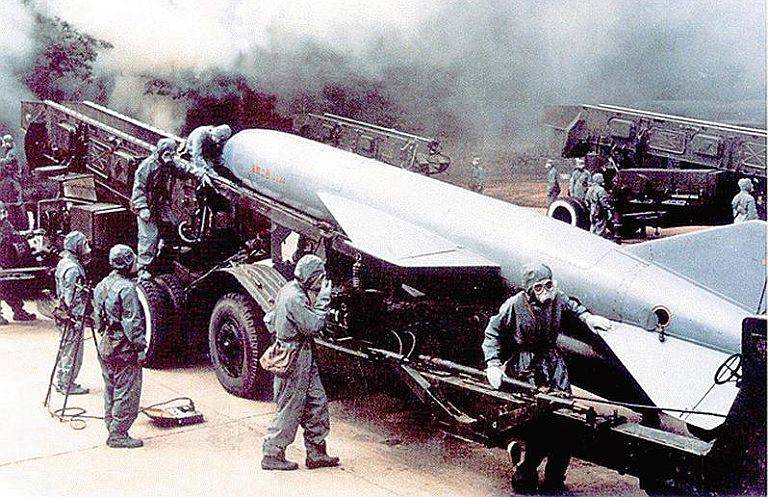
Despite the shortcomings, its design was quite simple, technological and understandable for Chinese specialists. But by the middle of the 80's, the noise immunity, range and speed of the missile’s flight no longer met modern requirements.
The use of LREs on the HY-2 RCC was a forced solution, since in the 60-70 in the PRC there were no other types of engines capable of providing the required range and speed data. Further efforts were made to improve the HY-2. After the appearance of recipes for solid-fuel and the creation of compact turbojet engines with satisfactory characteristics, the production of rockets with rocket engines, requiring rather labor-intensive maintenance and a long preparation time for launch, was refused in China. In the second half of the 80-x, deeply upgraded RCC with solid-fuel SY-2 and turbojet-SY-4 engines with several variants of active radar seeker were used.
In recent years, modern anti-ship complexes have been supplied to the armament of the missile units of the coastal defense forces of the PRC. This primarily relates to the RJYJ-8. The first missiles of this type entered service with the PLA Navy at the end of the 80's, while their launch range did not exceed 65 km.
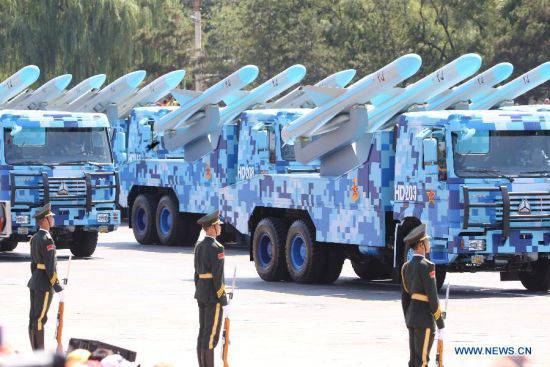
Over the past 25 years, several variants of the anti-ship missiles of the YJ-8 family have been created, in which the main combat characteristics were consistently improved: launch range, noise immunity and probability of hitting the target.
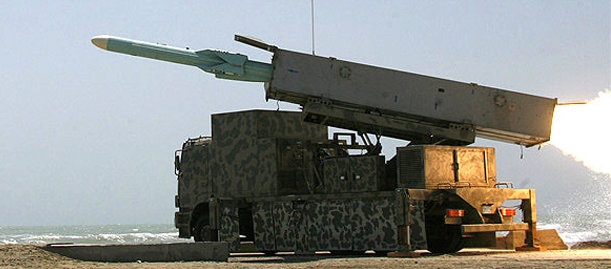
Various modifications of this rocket arm surface ships, submarines and coastal missile systems. The latest versions of the missiles are similar in their characteristics to the early modifications of the US UGM-84 Harpoon RCC.
In 2004, the Chinese Navy entered service with the anti-ship missiles YJ-62. Its modification for coastal missile systems - YJ-62C, is installed in the PU, on the off-road chassis.
The anti-ship missile YJ-62C was created using elements of the Soviet X-55, received from Ukraine and the unexploded Tomahawk CD, which were mined by Chinese intelligence in Iraq.
The launch range of the YJ-62 reaches 400 km with a mass of 300 warheads kg. But its significant drawback is the relatively low airspeed - 0,9M. Not so long ago, the media leaked information about the development of a new coastal missile system YJ-62 in the PRC based on the YJ-65. The new anti-ship missile will have a supersonic speed on the final leg of the flight with a longer range.
"Mosquito fleet
The PLA Navy has more than 100 rocket boats of various types, with about 20% RCC of the Chinese fleet deployed there. The most modern are the boats of the 022 pr. (Hubei type) with the 2x4 PU YCR-YN-83 PU. They replace outdated boats of the 021 Ave. (of the “Huanfeng” type) in the PRC.
Rocket boats of the 022 Ave. are built according to the original trimaran scheme. The architecture of the hull of boats meets the modern requirements of low visibility. Boats of this type in terms of combat performance are among the best in their class.
Trimaran scheme provides good seaworthiness and smooth entry into the wave, allows you to develop a high speed of full speed. Currently, more than eighty RK pr. 022 have been built in the PRC.
From 1991 to 1999, an 037 / 037GXNNXX / 037G1 missile boats were built on the basis of an anti-submarine boat of the 037 Ave. (Hainan) type. On boats installed four PU CRM YJ-2. As of 82 year, the PLA Navy had 2014 such missile boats.
Marine shock aviation
As of the end of 2014, the Chinese Navy aviation had: 55 bombers, 132 fighter and attack aircraft, 15 reconnaissance planes, 3 tanker aircraft. The share of naval aviation carriers accounts for about 30% of the RCC in the fleet. More than half of the Chinese hard-surface airfields are located along the coast at a depth of 700 km from the coastline.
It is difficult to judge how reliable the information is on the quantitative and qualitative composition of the Chinese Navy’s aviation, as many sources indicate that the H-5 bombers (the Chinese version of Il-28) are still used as mine and torpedo bombers. Therefore, in this section, we will focus on combat aircraft, whose presence in naval aviation is beyond doubt.
Of the aircraft that are in service with the naval aviation of the PLA Navy, the Russian Su-30MK2 and their Chinese "clones", J-16, pose the greatest danger to the US surface fleet. The Su-30MK2 armament includes Russian X-31P supersonic anti-radar missiles with a passive GOS, which can be used against radars of warships, as well as anti-ship X-31А with active radar GOS. J-16 multipurpose heavy fighter aircraft are adapted for the use of aircraft versions of the YJ-8 family of missiles.
In 2012, the Chinese fleet received the aircraft carrier Liaoning. Its aviation group includes up to 24 deck fighters J-15. Initially, the goal of the completion of the aircraft carrier received from Ukraine was to increase the combat stability of the Chinese fleet when operating at a considerable distance from its shores. Unlike the original project, which was carried out for the construction of the aircraft carrying cruiser Varyag, the Chinese revised version is more suitable for creating an aircraft fighter “umbrella” of a ship connection operating autonomously in the ocean zone. In the course of construction, launchers for RCC, RBU and SAM missile launchers were dismantled from the Chinese aircraft carrier. The remaining weapons systems are designed to provide air defense of the aircraft carrier in the near zone. The vacant place of the dismantled weapons systems uncharacteristic for an aircraft carrier was used to increase the number of aircraft based on the ship. In its current form, the Liaoning is a more balanced ship than its “relative” - the aircraft-carrying cruiser “Admiral of the Fleet of the Soviet Union Kuznetsov”. The tasks of anti-submarine and air defense are assigned to escort ships.
The Chinese carrier-based fighter J-15 was pirated based on the Su-33 (T-10K), one copy of which was obtained not in flying condition from Ukraine.
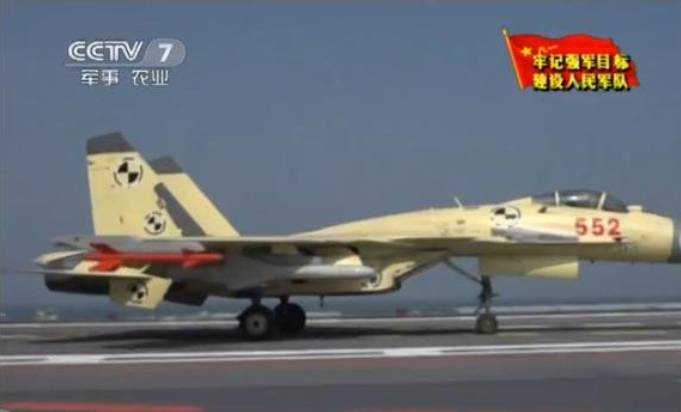
Unlike the Russian Su-33 aircraft, which cannot use controlled anti-ship weapon, J-15 Chinese deckers provided for the use of anti-ship missiles YJ-83, which significantly increases the impact capabilities of the Chinese aircraft carrier group.
In the middle of the 90's, the JH-7 fighter bomber entered service. This strike aircraft was created by order of the PLA Navy Command. At one time, the Chinese admirals were impressed by the American multi-purpose fighter F-4 "Phantom II", with which they had the opportunity to become acquainted during the Vietnam War. JH-7 is not only conceptually reminiscent of the "Phantom", but also partially uses some nodes, units and avionics borrowed from the American fighter.
So the Chinese Type 232H radar is based on the American station AN / APQ 120, several copies of which were removed from F-4 shot down in Vietnam. Often downed "Phantoms" fell in the coastal strip or on the crowns of trees, and their avionics did not receive fatal damage. Also in the Chinese JH-7 engines used Rolls-Royce "Spey" Mk.202, engines of this type previously installed on the deck version of the British F-4K.
On the strike aircraft of the JH-7 naval aviation, the YJ-81 solid propellant anti-ship missiles with a launch range of about 60 km are possible. This rocket is close in its capabilities to the French Exocet.
Anti-ship missiles modification YJ-83 armed with upgraded fighter-bombers JH-7A. After starting the CRP accelerates solid-fuel booster, after which the launch of the main engine. In the middle section of the flight, the control is carried out using an inertial system, with radio correction from the aircraft carrier. The active radar homing unit is switched on at the final segment. The launch range of the YJ-83 aviation variant is 250 km, and the cruise speed of the missile is 0,9M. In the target area, the rocket accelerates to a speed of about 2M.
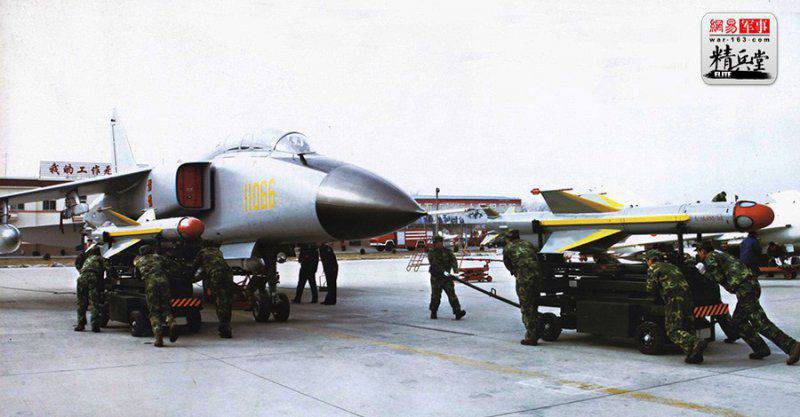
Marine aviation also has light J-10A single-engine fighter jets, which can also be used for strikes against naval targets using YJ-81 anti-ship missiles. But due to the relatively short range, J-10А can operate only in coastal areas.
Since the beginning of the 60-x in China, the long-range bomber H-6 (a copy of the Tu-16) has been operated. In addition to performing nuclear deterrence tasks, an anti-ship modification H-80D was built on the basis of this aircraft in the middle of the 6, capable of delivering strikes with anti-ship missiles YJ-61 (C-601). This missile was an aviation version of the liquid anti-ship missile HY-2.
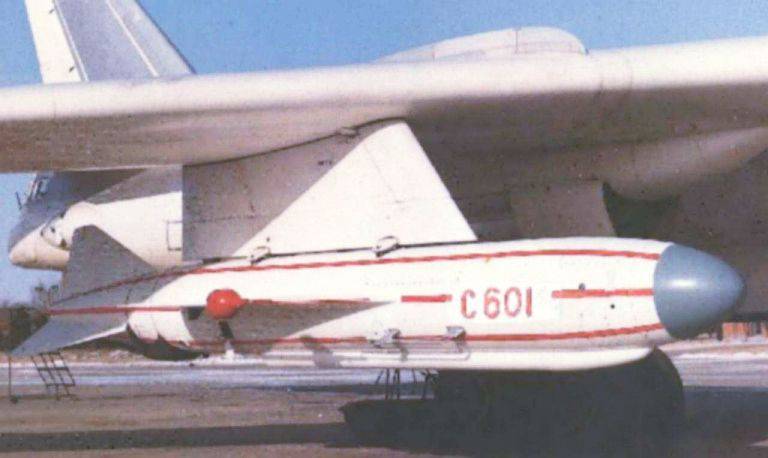
After creating and adopting the YJ-82 and YJ-62 anti-ship missiles, they replaced the long-range YJ-61 missiles with Chinese long-range bombers.
The most modern version of the H-6K with D-30KP2 turbofan engines adopted in the 2011 year has a combat range of about 3000 km. In the aircraft of earlier versions operating in the anti-ship variant, this figure was 1600 km. The long-range H-6 bombers are theoretically capable of striking anti-ship missiles in the oceanic zone at a considerable distance from the coast, which at a distance exceeds the range of the American carrier-based aircraft and Tomahawk cruise missiles. But at the same time, the bombers themselves are highly vulnerable due to the subsonic flight speed and high ESR. And in a real combat situation in the fight against AUG, they are very likely to be intercepted at long-range approaches to the launch line of their anti-ship missiles.
In terms of the number of strike aircraft of carrier-based aviation, the US Navy significantly exceeds the total number of naval aviation aircraft of the PRC. However, it should be understood that in the event of a conflict against US AUG, Chinese front and long-range aircraft will operate from coastal airfields.
Numerous Chinese and Russian-made air defense systems deployed along the coastline and interceptor fighters are capable of inflicting heavy casualties during the invasion of the air of the American strike aircraft of the PRC.
Under these conditions, without conquering air superiority by American aircraft, we can only talk about strikes at Chinese coastal facilities with long-range cruise missiles, which of course will not lead to the destruction of the entire military and industrial potential of the PRC and cause harsh retaliatory measures, which Americans are unlikely to do.
Intelligence, control and targeting
Along the coast of China and on the islands there are a significant number of long-range radar stations, which, together with coast guard ships, reliably monitor coastal waters. But the weak point of the PLA Navy is still the controls in the ocean zone.
As part of the Chinese fleet there are about 20 large reconnaissance ships capable of operating at a considerable distance from its shores. However, this number is clearly not enough to fully monitor the situation in the Pacific.
The most modern Chinese intelligence officers of the ocean zone are ships of the project 815G. Ships of the 815 Ave. are built from the middle of the 90's. Currently, the Chinese navy has three ships of the 815 and 815G Ave.
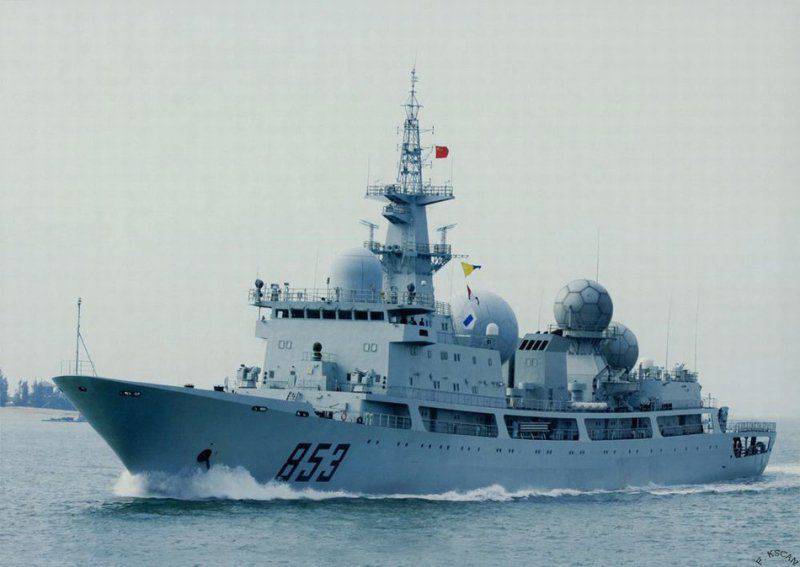
The purpose of the ships of the pr. 815 and 815G is to monitor the actions of the ships of foreign countries and the conduct of radio intelligence. It is known that in the near future the Chinese fleet will be replenished with several more reconnaissance ships of this type. But lightly armed and relatively slow-moving ships are the observing means of “peacetime”. In the event of a real threat to the American AUG, they will be instantly neutralized.
In the interests of naval intelligence, there are two Chinese radio interception centers in Cuba. On the Cocos Islands belonging to Myanmar, deployed several stations of electronic intelligence, which collect information about the situation in the Indian Ocean. Recently, radio interception centers on Hainan Island in the South China Sea and Sop Hau near Laos were restored.
Developed and put into operation coastal balloon reconnaissance complexes "Sea Dragon", capable of detecting and issuing targets for naval and air targets at a distance of more than 200 nautical miles.
Chinese Y-8J patrol aircraft fly over Marshal Shaposhnikov BOD and Guangzhou, a Chinese destroyer, during Russian-Chinese joint exercises
Aerial reconnaissance using radar for detecting long-range surface targets is conducted by Y-8J aircraft. The basis for Y-8J is the transport Y-8, which in turn is the Chinese version of the Soviet An-12.
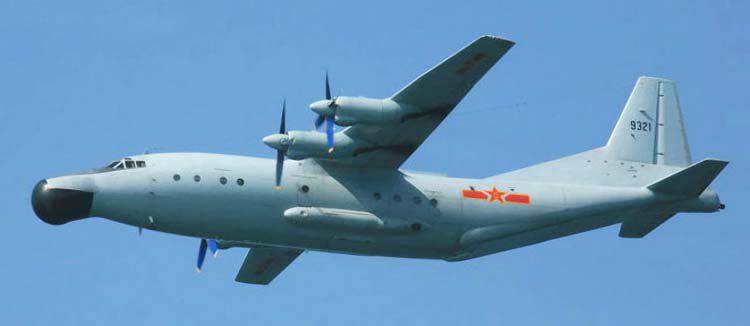
The radar of the Y-8J patrol aircraft can simultaneously track 32 naval targets at a distance of up to 250 km, including even such as a submarine periscope.
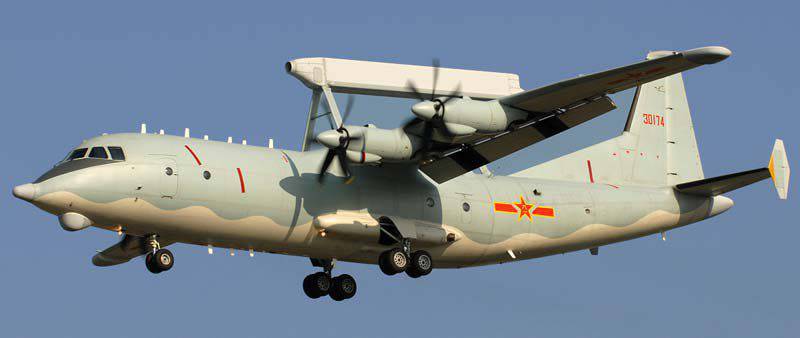
For these purposes, the DRLO Y-8W (KJ-200) aircraft with a range of detection of large surface targets up to 400 km can be used.
Special mention deserves the reconnaissance Tu-154MD (Tu-154Р), built on the basis of a Soviet-made medium-haul passenger airliner, which regularly flies over the sea. In terms of its capabilities, the TU-154MD is comparable to the American E-8 JSTARS aircraft.
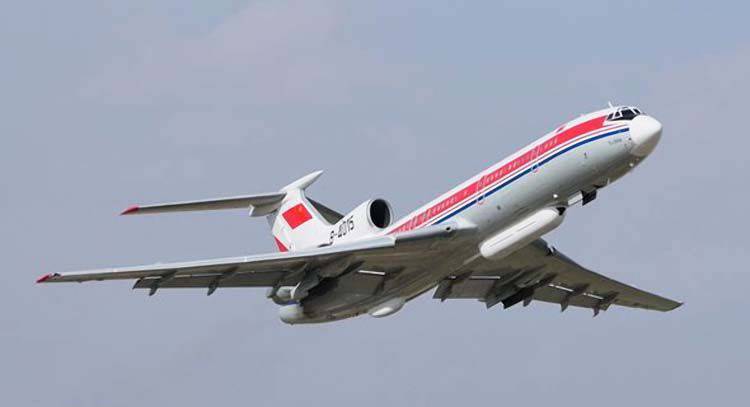
The first aircraft was converted in 1996 year. On it are kept civilian identification marks and coloring of the Chinese airline "China United Airlines". The reconnaissance Tu-154MD under the fuselage in a streamlined container carries a search radar with synthetic aperture, and the plane also has powerful television and infrared cameras for visual reconnaissance.
Currently, a large-scale program for the construction of several types of DROLO aircraft has been launched in the PRC. Such as: JZY-01, KJ-500, KJ-2000. However, these not-yet-numerous aircraft in the PRC are too expensive and valuable to risk them on long-haul sea flights. The priority task of the Chinese radar patrol aircraft is the control of the air situation, guidance and control of fighter aircraft.
In this situation, we should expect the appearance in the PRC of a specialized aircraft of the type of American P-8 "Poseidon", capable of controlling the sea surface in the ocean spaces. In the meantime, long-range bombers H-6 and seaplanes SH-5 are periodically attracted for these purposes.
The Chinese artificial satellite HY-1, launched in the 2002 year, is intended for tracking from space across the ocean. On board there are optoelectronic cameras and equipment transmitting the resulting image in digital form. The next spacecraft of a similar purpose was the ZY-2. The resolution of the onboard photographic equipment ZY-2 is 50 m with a fairly wide field of view. Satellites of the ZY-2 series have the ability to perform an orbital maneuver. All this allows them to monitor the AUG. However, Chinese representatives refute all the assumptions regarding the military purpose of these spacecraft, stating that they serve exclusively the peaceful purposes of studying the world's oceans.
Current opportunities and prospects
Already, combat aircraft based on coastal aerodromes, frigates of URO, missile boats and anti-ship missile complexes of coastal defense forces make it impossible to find a hostile foreign fleet in the coastal waters of the PRC.
Currently, China is actively building ocean-class ships. In addition to the three existing fleets in the People's Republic of China, in the near future it is planned to create a fourth one, capable of operating and conducting large-scale operations in the ocean zone, outside the coastal waters.
According to American naval analysts, in the near future, China will have the opportunity to form its own aviation strike group. The structure of this Chinese AUG, in addition to the aircraft carrier "Liaonin", can enter the squadron of frigates and destroyers from 6-8. The following warships have the ability to accompany a Chinese aircraft carrier on a long-range cruise: FR URO XR. 053, EM YRO XR. 051, 052. Ave., 052.S., 956.S. and 956.S., etc. multipurpose submarines of 052 Ave. and 051 Ave., as well as tankers and supply ships.
In this line-up, the Chinese AUG may well play on an equal footing with the duty forces of the US Navy 7 fleet, which are permanently located in this region. But in the event of escalation of tensions and other American aircraft carrier groups to the area, the superiority of the US Navy will be overwhelming, and the Chinese sailors will not be able to resist the Americans. In addition, American AUGs operating in the world ocean due to the presence of aircraft on aircraft carriers, DRLOs have a significant advantage in the timely detection of surface and air targets. This largely depreciates the numerous anti-ship missiles that can carry Chinese warplanes and ships. In addition, the PRC of the PRC Navy with a range of about 300 km in the main part have a subsonic speed in the final section of the trajectory.

Under these conditions, along with increasing the size of its fleet and improving its anti-ship armament, the PRC leadership took a number of “asymmetric” steps. First of all, it concerns the coastal anti-ship ballistic missile complex, which is based on the DF-21 mobile MRSD.
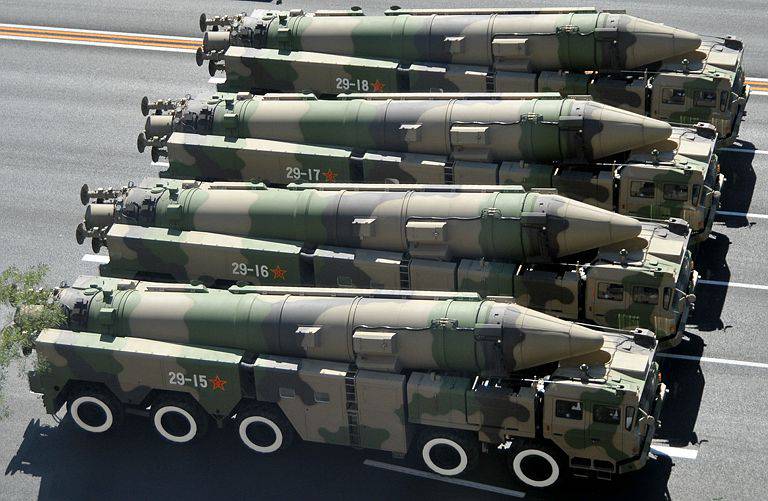
It is assumed that anti-ship DF-21D with a launch range of more than 1500 km will be equipped with maneuvering at the final section of the warhead with an active radar seeker. Given that the warhead of a ballistic missile DF-21 is moving at the final stage with hypersonic speed, in the case of salvo application, the fight against them will be a very difficult task for the American squadron air defense systems.
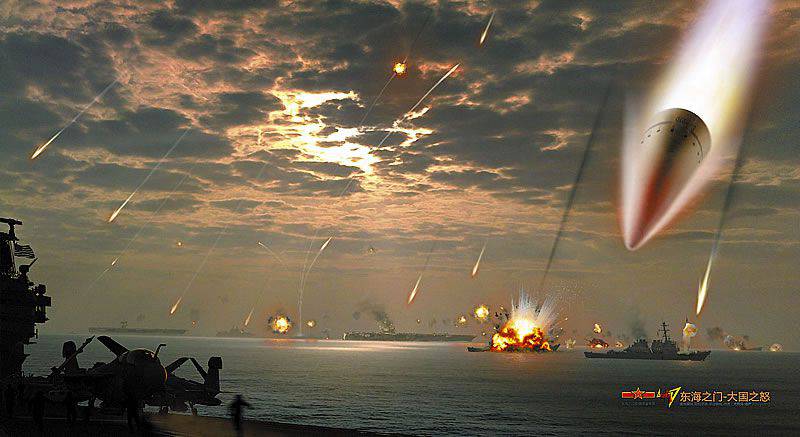
According to data published by US intelligence services, anti-ship reconnaissance aircraft DF-21D are already in use in the PRC in test mode. So far they are limited by insufficient capabilities of reconnaissance and targeting systems. To correct the situation in the PRC, an over-the-horizon radar is being built on the coast with a detection range of sea targets up to 3000 km, and a new generation of reconnaissance and target designation satellites are also planned.
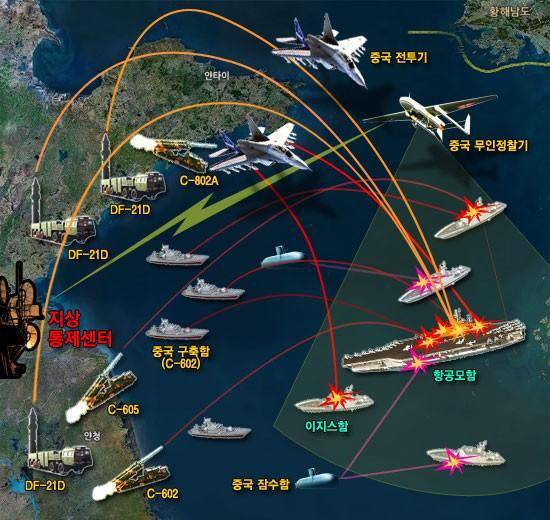
As many observers say, the Chinese 5 generation J-20 aircraft with supersonic cruising speed and low radar visibility, for which a long-range anti-ship missile with a ramjet engine is being developed, is also aimed at solving anti-ship targets.
In the case of the implementation of these plans, the shock capabilities of Chinese aviation, the fleet and coastal missile systems will be enough to keep American AUGs beyond the combat range of existing cruise missiles and deck aircraft in a shock configuration. This will unleash the hands of the People's Republic of China and will enable military resolution of territorial disputes with Japan and the “Taiwan Question”.
Publication of this series:
PLA Navy Capabilities to Combat Aviation Shock Groups. Part 1
Based on:
http://www.navy.mil/index.asp
http://www.modernarmy.ru
http://www.defensemedianetwork.com
http://flot.com
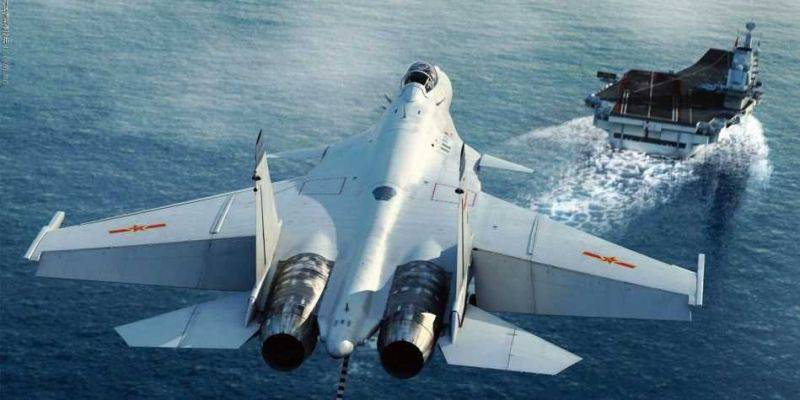
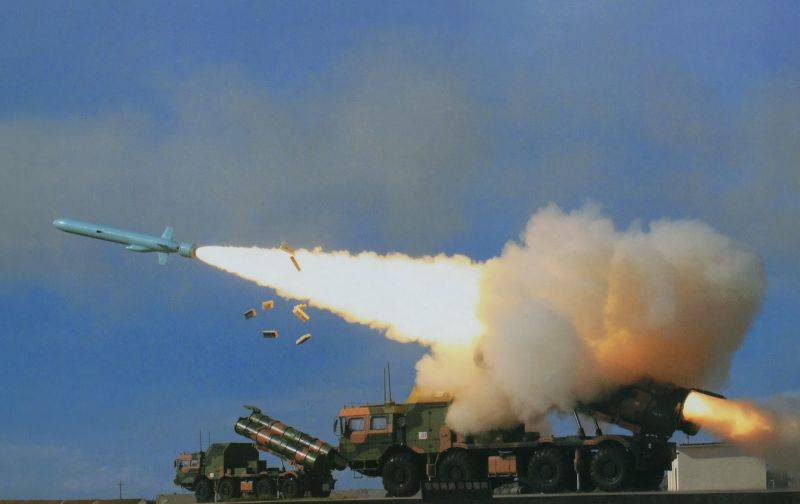
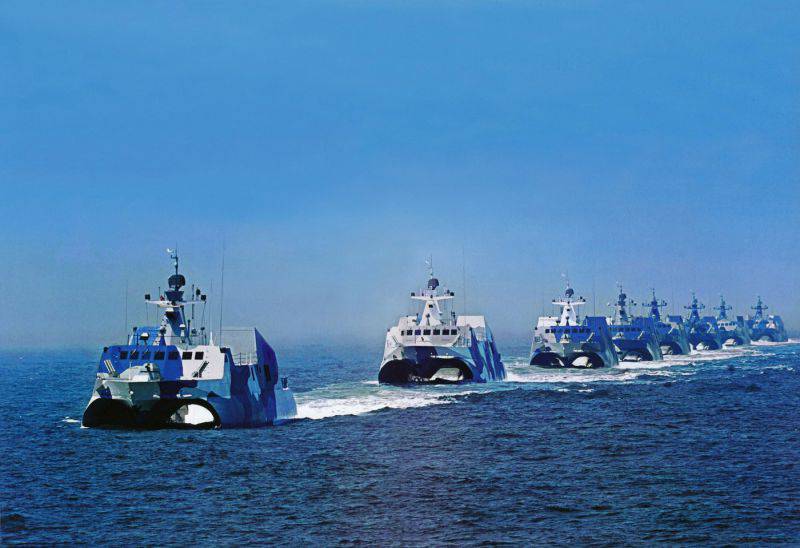
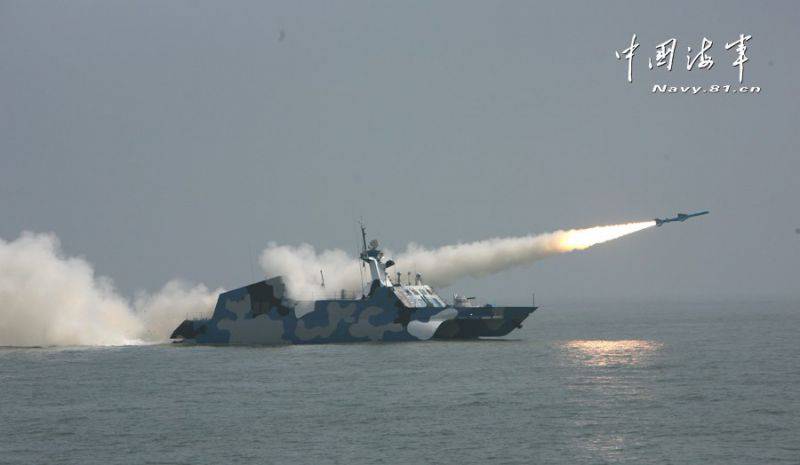
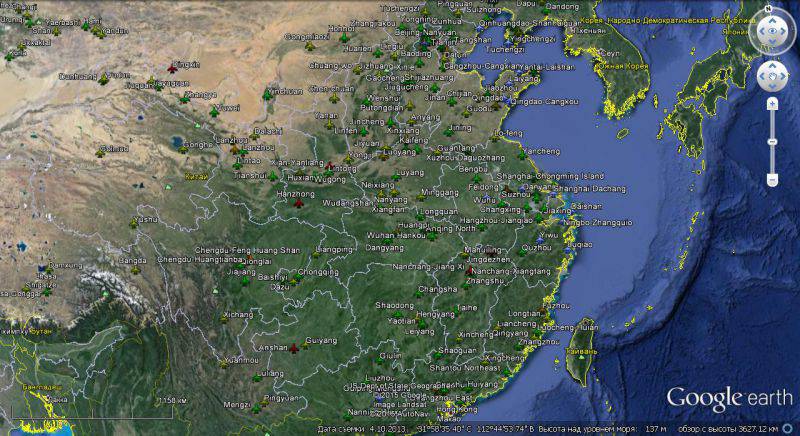
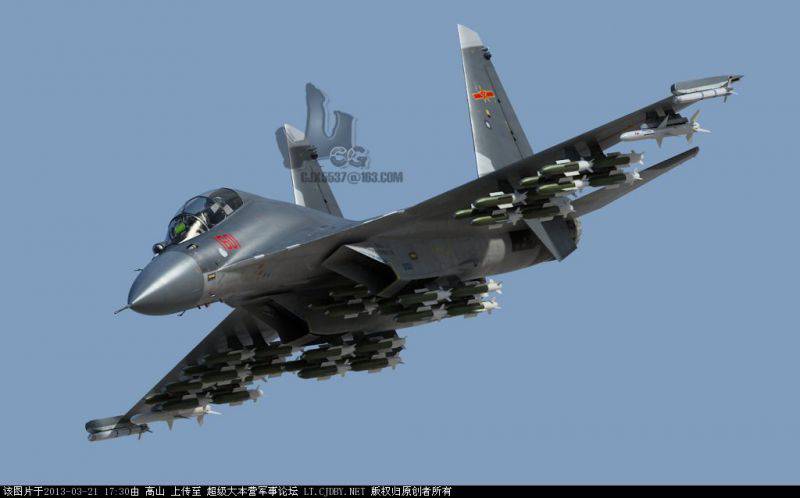
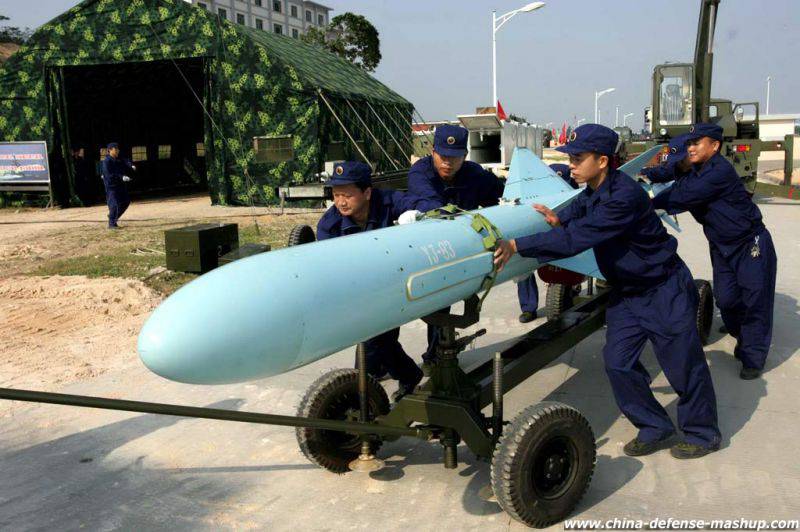
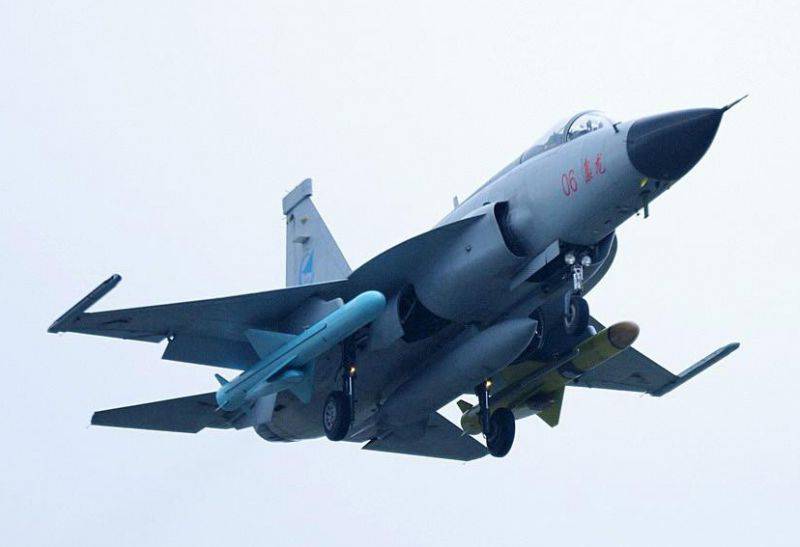
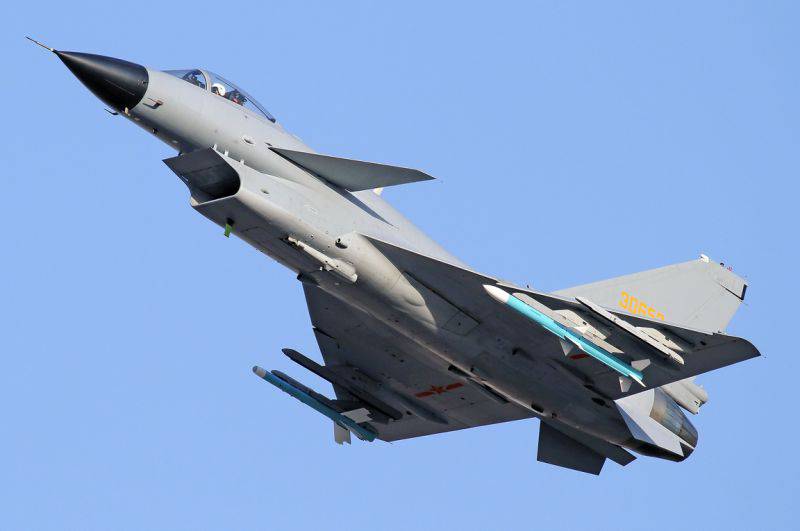
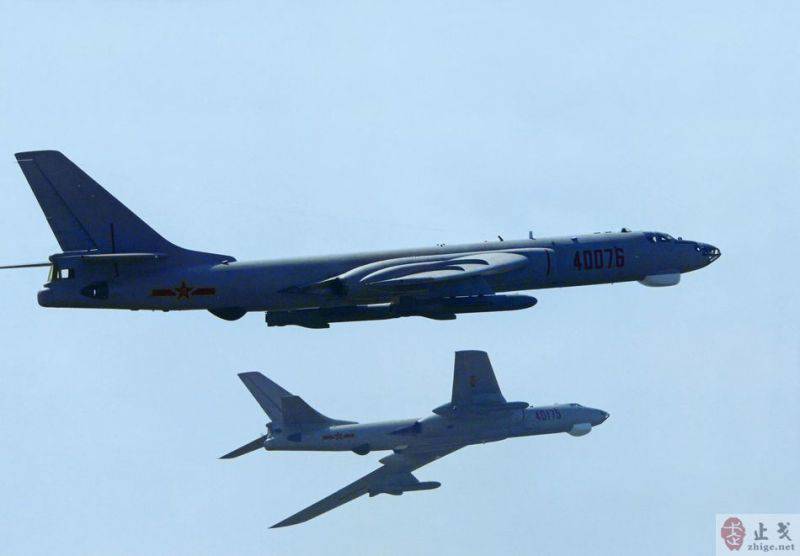

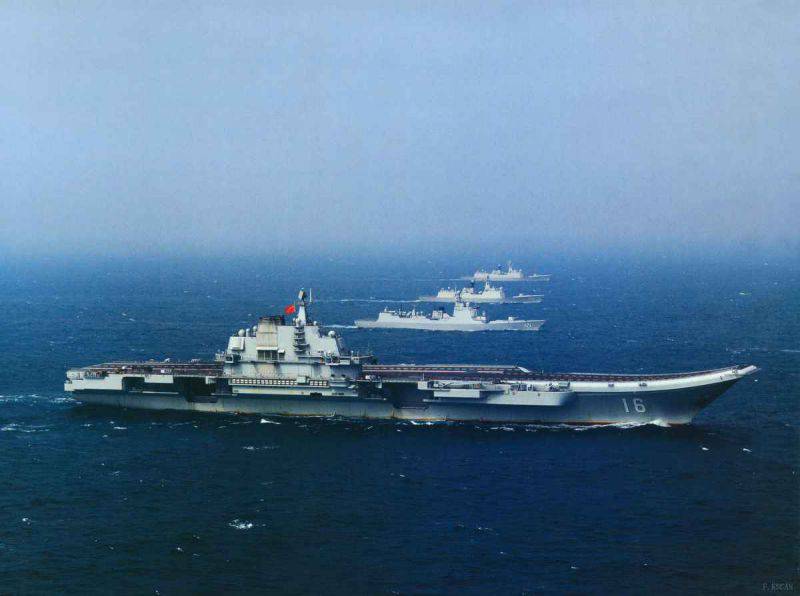
Information